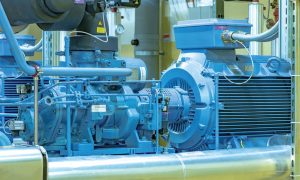Multiple factors influence consumers’ choices of air conditioning equipment in various spaces. Raman Singh, HVAC Lead System Engineer at Alstom, discusses the benefits of temperature and humidity sensors in navigating HVAC equipment and foretelling failures.
What factors influence consumers’ choice of air conditioning equipment?
Air conditioning equipment usage depends on the consumer’s requirements, space availability, electricity, and budget. Various cooling modes, like air conditioners, coolers, and fans with misters, are available in the market. Air conditioners would be a viable option for confined spaces with no ventilation. Since electricity bills are a concern, air coolers can be used, provided the users have good ventilation space and an adequate water supply.
Malls and community centres use centralised air conditioners with chilled water or variable refrigerant flow (VRF/VRV systems). Affordability varies depending on the consumer’s mindset and the pre-set budget for cooling requirements. In the same environment, a user will require a chilled room temperature of 18 C throughout the day, while another might need a temperature of 25 C to be comfortable. The market caters to everyone’s requirements within the price limit.
Evaluating the efficiency of air conditioning equipment varies widely. One must have an understanding while assessing. For example, air cooler efficiency can be measured in terms of wet bulb efficiency, while air conditioning efficiency is measured in terms of IEER, EER, and SEER. The efficiency of chillers is measured in terms of IPLV and NPLV.
What are the benefits of using temperature and humidity sensors to control equipment?
The functions and applications of temperature and humidity sensors are separate. Using temperature sensors to control equipment is simpler and less expensive. We can use thermostats or NTC sensors to monitor and control the equipment by adjusting operating cycles and reducing energy consumption. Relative humidity monitoring using a sensor is a bit complicated and cannot be controlled by the user as a fixed point, like temperature. The most crucial aspects of choosing any humidity sensor are its precision and accuracy, depending on the kind, and its response time, depending on air movement. While regulating humidity may help to ensure comfort, it may or may not increase equipment efficiency. Temperature settings can also help to improve equipment efficiency.
What innovations and technologies are on trend to enhance supermarkets’ energy efficiency and refrigeration performance?
Numerous companies enter the grocery market and offer condition-based monitoring systems that forecast energy usage and preventive and predictive failures. Switchable chillers are also on the market, allowing you to chill water bottles and cold beverages or freeze ice cream with one device. In Europe, retailers continue to employ refrigerants like CO2 with ejector technologies. Units with variable-frequency motors as their foundation are now available for refrigeration applications.
The distinctive cabinet designs are energy-efficient. They also create a curtain to prevent outside air from entrainment while opening the door and have a consistent distribution of airflow that keeps a constant temperature.
What are the challenges and necessary steps in developing preventive monitoring systems for HVAC equipment using sensors?
The idea of utilising preventive sensors in monitoring systems is innovative. However, this would be effective only if it gave the end user or service engineer the information they needed to take the appropriate action. We install different sensors in the equipment and track those values on the screen, but we fail to make definitive statements about whether the equipment operates as intended. The distinct methodology should be as follows: engineers should record those values as a signal and must devote time to them. Engineering expertise to create those kinds of signals will assist. The time taken for task completion will be longer as it involves extensive simulation and experimental validation. However, once it is in place, it will anticipate all the failures and alert those who need to know. Only a few companies in the market currently use data science methodology to predict those failures. Still, their knowledge of the behaviour of every component installed in HVAC equipment—whether it be the fan flow characteristics, rotary compressor, scroll, screw, or performance of the heat exchanger—is limited. When they are combined with data science, meaningful solutions can be achieved.
Cookie Consent
We use cookies to personalize your experience. By continuing to visit this website you agree to our Terms & Conditions, Privacy Policy and Cookie Policy.














